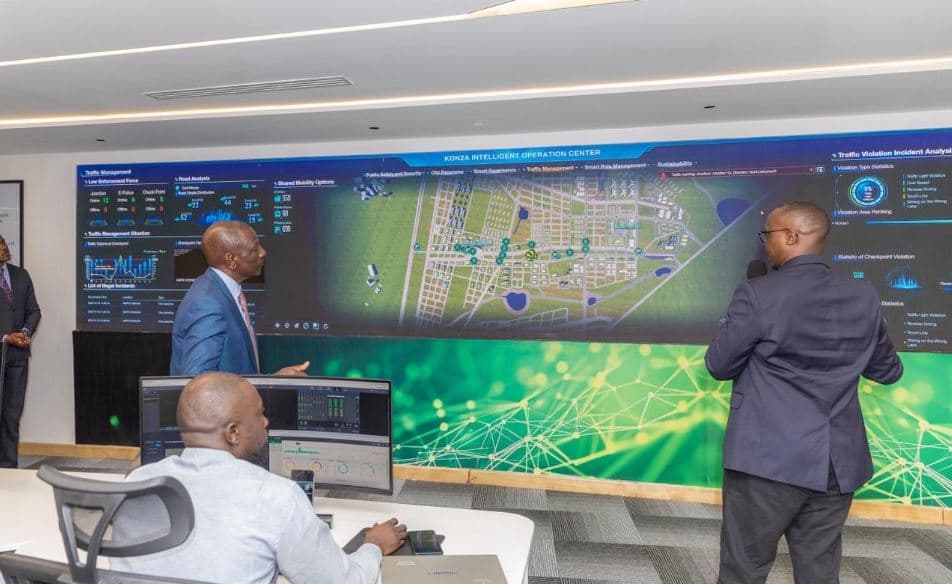Loading News Article...
We're loading the full news article for you. This includes the article content, images, author information, and related articles.
We're loading the full news article for you. This includes the article content, images, author information, and related articles.
President William Ruto has unveiled an ambitious KSh4 trillion masterplan aimed at accelerating Kenya's journey towards becoming a developed nation, focusing on strategic investments in key sectors.

President William Ruto has announced a comprehensive KSh4 trillion masterplan designed to transform Kenya into a developed nation. The ambitious plan focuses on significant investments across critical sectors, including energy, roads, dam construction, and the development of smart cities such as Konza Technopolis. This initiative is expected to heavily influence public debate and policy execution in the near term, with stakeholders emphasising the need for transparent timelines, detailed costs, and robust safeguards.
Kenya's pursuit of long-term development is not new. The country's overarching development blueprint, Vision 2030, launched in 2008 by then-President Mwai Kibaki, aims to transform Kenya into a newly industrialising, middle-income country by 2030, offering a high quality of life to all its citizens in a clean and secure environment. Vision 2030 is structured around three pillars: economic, social, and political governance, with an initial target of achieving a sustained annual Gross Domestic Product (GDP) growth rate of 10 percent.
The current masterplan appears to align with and potentially accelerate the objectives of Vision 2030. Over the years, Kenya has implemented various medium-term plans (MTPs) to operationalise Vision 2030, systematically reviewing and adjusting strategies every five years to adapt to changing environments. The government has consistently aimed for substantial economic growth, with the economy expanding by 5.2% in 2023, up from 4.8% in 2022, driven by agriculture and services.
The implementation of such a large-scale plan necessitates a strong policy and governance framework. The Kenyan Constitution (2010) and the Public Finance Management Act (2012) provide the legal basis for budget processes and financial accountability. The government's fiscal policy for the Financial Year 2024/2025 and the medium term is geared towards supporting the Bottom-Up Economic Transformation Agenda (BETA), aiming for growth-responsive fiscal consolidation to manage public debt without compromising service delivery.
In the Financial Year 2025/2026, the total budget estimates are projected to increase by 7.1% to KSh 4.3 trillion from KSh 4.0 trillion in FY 2024/2025. This budget is expected to be funded by KSh 3.4 trillion in revenue collections and KSh 923.2 billion in borrowings. President Ruto has also emphasised the role of devolution in national growth, noting that KSh 4 trillion has been transferred to counties over the last 12 years to foster inclusivity and address marginalisation. He has urged counties to adopt technology, particularly the eCitizen platform, to enhance efficiency and curb resource wastage.
Analysts generally agree that significant investment is crucial for Kenya's development trajectory. The African Development Bank projects Kenya's GDP to grow by 5.4% in 2024 and 5.6% in 2025, driven by services and household consumption. Other forecasts for 2025 vary, with the World Bank projecting 4.5% growth, the Central Bank of Kenya at 5.2%, and the African Development Bank at 5.6%. Kenya's nominal GDP was approximately $108.04 billion (KSh 14.04 trillion at an exchange rate of KSh 130 to 1 USD) in 2023.
Concerns, however, remain regarding the country's debt sustainability and the impact of global economic headwinds. The fiscal deficit is projected to narrow to 4.8% of GDP in FY 2025/2026 from an estimated 5.1% in FY 2024/2025. The government aims to increase revenue collection, with President Ruto previously setting a target for the Kenya Revenue Authority (KRA) to double its collections from KSh 2.1 trillion to over KSh 4 trillion to address the national debt.
The successful implementation of a KSh4 trillion masterplan hinges on several factors, including effective resource mobilisation, prudent financial management, and mitigating potential risks. Kenya's economy remains vulnerable to climate change, which erodes 3-5% of GDP annually through extreme weather events. Therefore, integrating climate action into development plans is critical. The push for digitisation, particularly through the eCitizen platform, is seen as a key strategy to improve efficiency and combat corruption, which could otherwise derail large-scale projects.
Going forward, close attention will be paid to the detailed breakdown of the KSh4 trillion masterplan, including specific project allocations, funding sources, and implementation timelines. The government's ability to maintain fiscal discipline, enhance revenue collection, and ensure transparency in project execution will be crucial. The ongoing public discourse will likely focus on how these investments translate into tangible improvements in the lives of ordinary Kenyans and contribute to the country's long-term development goals.
Keep the conversation in one place—threads here stay linked to the story and in the forums.
Other hot threads
E-sports and Gaming Community in Kenya
Active 6 months ago
Popular Recreational Activities Across Counties
Active 6 months ago
Investing in Youth Sports Development Programs
Active 6 months ago
The Role of Technology in Modern Agriculture (AgriTech)
Active 6 months ago